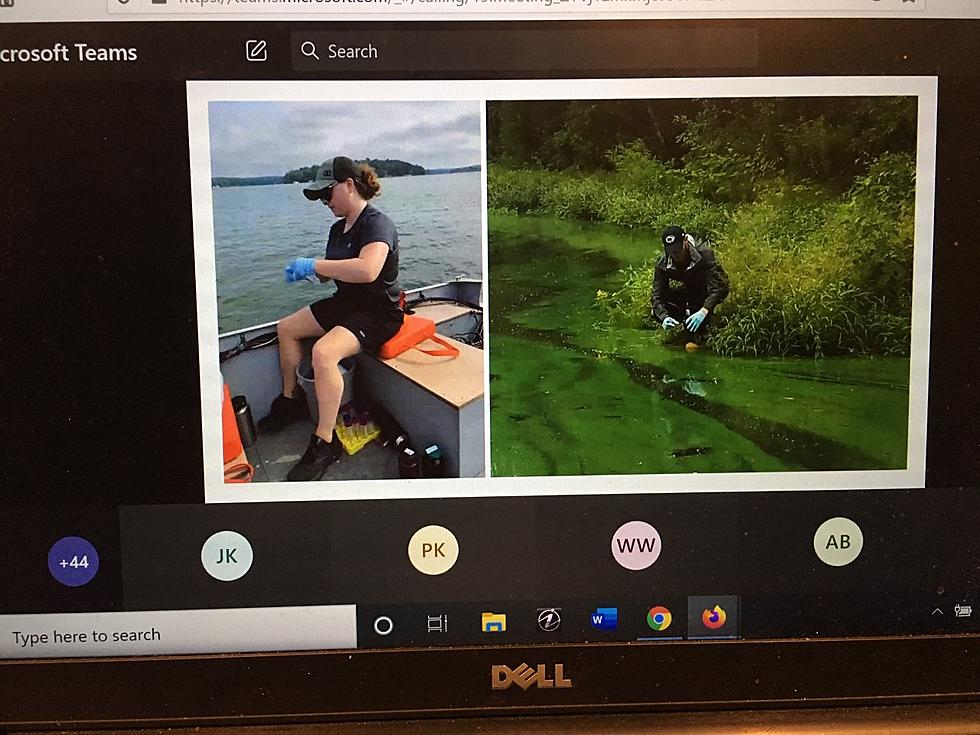
NJ: ‘More widespread distribution’ of harmful algal blooms in 2020
As the Garden State continues to enhance its response and protection strategies concerning a potentially fatal problem in lakes, ponds and other bodies of water, officials say the issue appears to be affecting more parts of the state in 2020.
The threat of harmful algal blooms (HABs) is expected to be even greater as the years go by, in large part because of climate change. So officials are increasingly interested in finding ways to prevent the blooms from occurring in the first place.
New Jersey saw a record number of HABs in 2019, including some that "overwintered" into 2020, Department of Environmental Protection officials saidTuesday.
So far this year, the state has investigated 27 reports of HABs in New Jersey waters, and confirmed their presence in 16 bodies of water. Individual bodies of water can have more than one bloom at a time.
"What's notable is we're seeing a more statewide distribution," said Bruce Friedman, director of the Division of Water Monitoring and Standards. "In 2019 at this time the reports were mostly in North Jersey. This year, we have quite a few in South Jersey, concentrated in Burlington, Gloucester and Camden counties."
Friedman said there's no way to tell whether this trend is due to better reporting among swimmers and other members of the public, or an actual expansion of the problem's reach.
The DEP earlier this year announced the launch of a mapping tool that the public can use to submit information about suspected HABs. Through the tool, users can describe what they're seeing and where, and submit a photo. The DEP can then investigate those claims.
Depending on the size of the problem, the body of water could then be assigned one of five index levels — watch, alert, advisory, warning, or danger — indicating which recreational activities are not suitable.
As of Tuesday, according to the tool, no bodies of water were at the "danger" level. Two lakes in New Jersey, Driscoll Pond and Hopkins Pond in Haddonfield, were at the "warning" level due to levels of algae present. With that designation, public bathing beaches are closed, people are told to avoid primary contact, and secondary contact recreation such as fishing is frowned upon.
Exposure to or ingestion of affected water can produce effects from a mild rash and flu-like symptoms to liver toxicity and neurological issues. Children and pets are considered to be more vulnerable because they ingest more water in relation to their weight.
"Many of the lakes affected by algae blooms aren't only important recreation areas but major drinking water sources as well," said Jeff Tittel, director of the New Jersey Sierra Club.
According to Tittel, the DEP's mutli-colored warning system for HABs is more harmful than helpful because it permits swimmers to bathe at their own risk when algae levels are already unsafe.
Harmful algal blooms are a growing problem on a national and global scale. Warm weather is a key ingredient in causing blooms.
"According to national experts, blooms are becoming more frequent as temperatures warm and the amount of nutrients in our waters increase," said Kati Angarone, the DEP's associate commissioner for science and policy. "These blooms are a very real and visible symptom of global warming."
Since 2017, Angarone said, the state has collected HAB information that's given experts a better handle on HAB behavior and a better idea as to when they're more likely to see blooms that produce toxins.
Friedman said New Jersey continues to make incremental improvements to its program targeting HABs. Through the use of grants, New Jersey has utilized a number of preventive measures on "HAB waterbodies" such as Lake Hoptacong, Budd Lake and Deal Lake.
"HABs are a symptom of a lake out of balance," Friedman said. "We need to take steps to address the cause, and not just deal with the symptoms."
More From Townsquare Media News:





